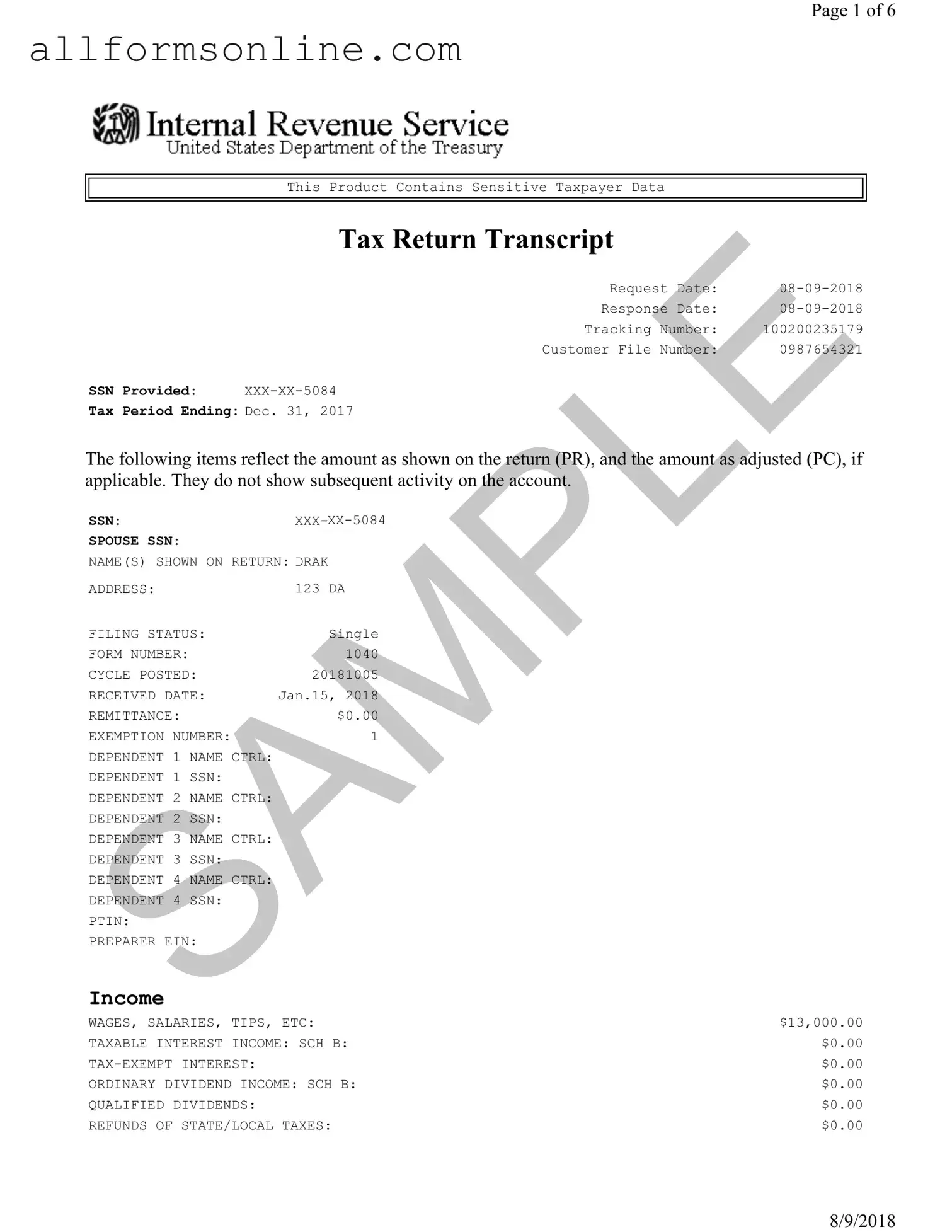What is a Sample Tax Return Transcript?
A Sample Tax Return Transcript is a document that summarizes key information from a taxpayer's tax return. It includes details such as income, deductions, credits, and tax liability. This document is often used for verification purposes, such as applying for loans or financial aid.
How can I obtain my Sample Tax Return Transcript?
You can request your Sample Tax Return Transcript through the IRS website, by phone, or by mail. To obtain it online, you will need to create an account on the IRS website and verify your identity. Alternatively, you can call the IRS at 1-800-908-9946 or complete Form 4506-T and send it to the IRS by mail.
What information is included in the Sample Tax Return Transcript?
The transcript includes your Social Security Number (SSN), filing status, income details, adjustments, tax credits, and any payments made. It provides a comprehensive overview of your tax situation for the specified tax year.
Is the Sample Tax Return Transcript the same as my full tax return?
No, the Sample Tax Return Transcript is not the same as your full tax return. The transcript summarizes key information but does not provide all the details found in your complete tax return. It is a condensed version meant for specific purposes.
How long does it take to receive my Sample Tax Return Transcript?
If you request your transcript online, you may receive it immediately. Requests made by phone or mail may take longer, typically around 5 to 10 business days, depending on the method used and the IRS's processing times.
Can I use the Sample Tax Return Transcript for loan applications?
Yes, many lenders accept the Sample Tax Return Transcript as proof of income. It provides a reliable summary of your financial information, which can help support your loan application. Always check with your lender to confirm their specific requirements.
What should I do if I notice an error on my Sample Tax Return Transcript?
If you find an error on your transcript, you should contact the IRS to resolve the issue. You may need to provide additional documentation or information to correct the error. It's important to address any discrepancies promptly to avoid potential issues with your tax records.
Are there any fees associated with obtaining my Sample Tax Return Transcript?
No, there are no fees for obtaining your Sample Tax Return Transcript from the IRS. The service is provided free of charge, whether you request it online, by phone, or by mail.
